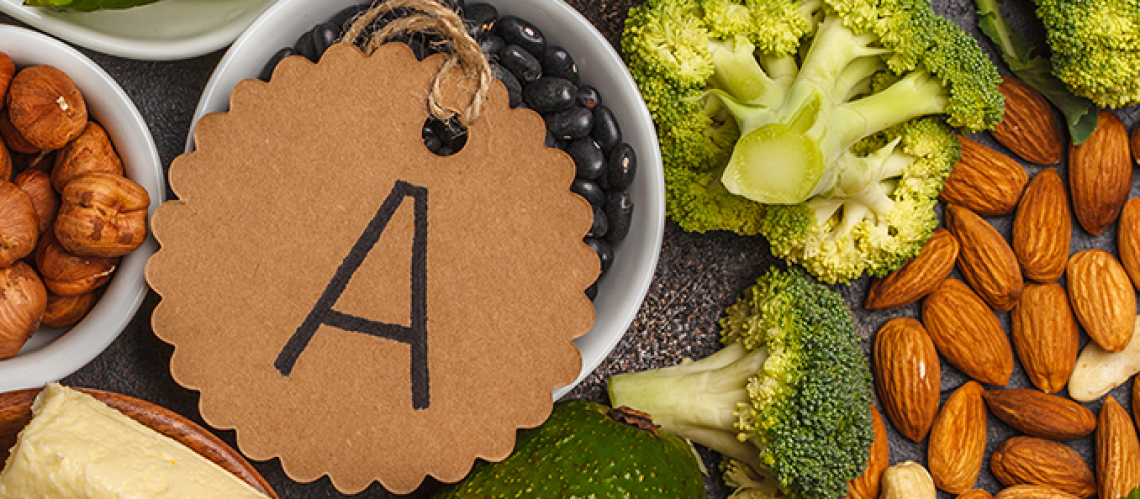Do you remember your mum looking despairingly at your untouched vegetables and trying the old line: ‘if you eat all your carrots, you’ll be able to see in the dark’? Well, as it turns out it’s not quite the myth you thought it was, but that a carrot’s main nutrient, beta-carotene (responsible for its characteristic colour) is a precursor to vitamin A and helps your eyes to adjust in dim conditions. It won’t give you superpowers of night vision or cure your dependence on lenses of any kind, but eating an adequate amount of vitamin-A rich food will support eye health.
Benefits
Not only is vitamin A important for maintaining healthy vision, it is essential for growth and development, cell recognition, immune function and reproduction. It is a powerful antioxidant, fighting cell damage and through its role with cell growth and division, vitamin A has an important role in the normal formation and maintenance of the heart, lungs, kidneys and other vital organs.
Vitamin A helps skin grow and repair skin. It is an active ingredient in prescription medication that treats acne and other skin conditions. It works by signalling the cells to grow at a faster rate, bringing fresher, more youthful skin to the surface more rapidly.
It also stimulates the production and activity of white blood cells, takes part in the formation and maintenance of teeth, bones and soft tissue, helps maintain healthy endothelial cells (those lining the body’s interior surfaces), and regulates cell growth and division such as needed for reproduction.
What is Vitamin A?
Vitamin A is the generic term for a group of fat-soluble compounds found in both animal and plant foods, and come in two forms: Preformed vitamin A and provitamin A.
Preformed vitamin A (retinol, retinal and retinoic acid): is the active form of the vitamin which your body can use just as it is. It’s found in animal products, supplements and fortified foods.
Provitamin A carotenoids – alpha-carotene, beta-carotene and beta-cryptoxanthin are the inactive form found in plants. These compounds are converted to the active form in your body. For example, beta-carotene is converted to retinol in your small intestine.
Deficiency and Dosage
People with long-term malabsorption of fats are more susceptible to developing a vitamin A deficiency, although a deficiency is rare in the developed world. It has become a public health problem in many countries in Africa and Southeast Asia, and affects many young children and pregnant women in low income countries in particular. In fact, vitamin A deficiency is the leading cause of childhood blindness in Southeast Asia. It also increases the risk of serious illness, such as infectious diarrhoea and measles.
Vitamin dosage is tricky as too little can make a person more susceptible to disease and vision problems, while too much can create many problems as well. Overdose is plausible given its fat soluble nature and has been associated with a diverse set of symptoms, ranging from skin and hair loss to neurologic problems, nausea, vomiting, fatigue, balance problems, liver problems, muscle pain, confusion, higher risk of osteoporosis and hip fractures.
Some of the most common symptoms of vitamin A deficiency include:
- Dry eyes
- Night blindness
- Dry lips
- Skin conditions such as thick or scaly skin
- Impaired immunity
- Stunted growth in children
A healthy, balanced diet should provide enough vitamin A without needing supplements. Here is a list of the food sources of vitamin A to guide you. Make a smoothie with all those delicious orange fruits, throw some spinach and kale into your stews, soups and salads, have snacks like sliced red peppers and carrot sticks on your desk - just be careful - don’t eat too many carrots unless you’d like a jaundiced appearance. We store beta-carotene in the cells under our skin, so eating a lot of beta-carotene from foods can make your skin look yellow, but is not harmful to your health. As always, please check with your doctor before taking any supplements.

Comments